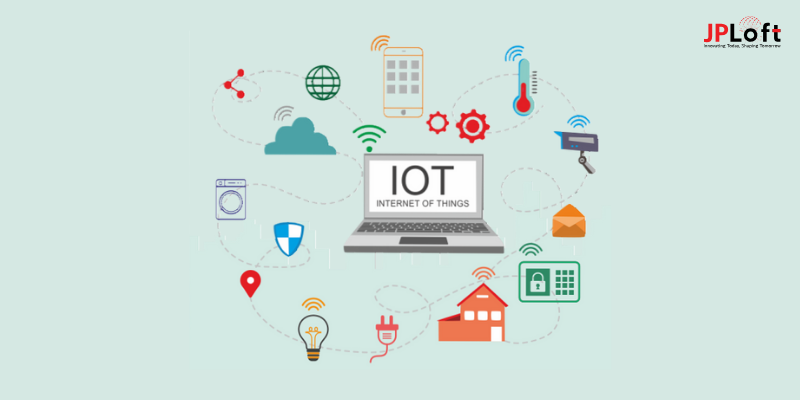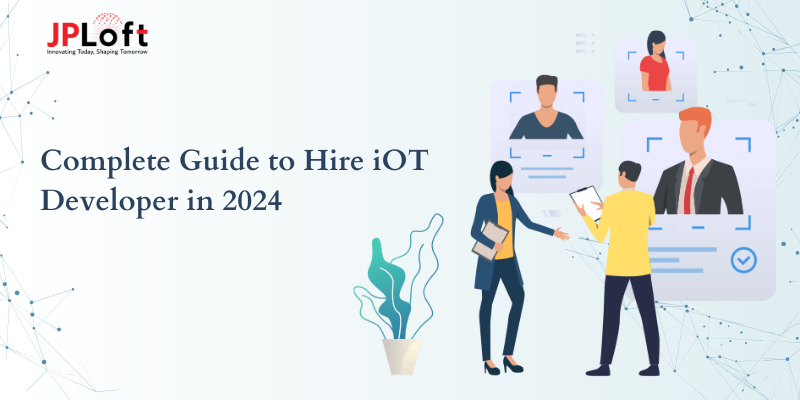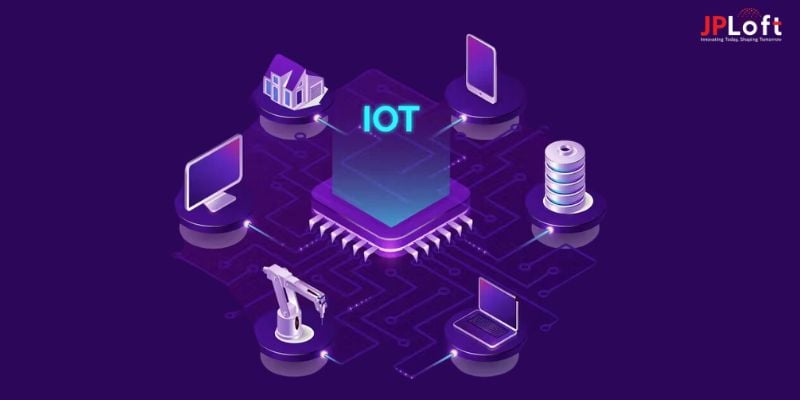At an unprecedented speed of technological development, the Internet of Things (IoT) has emerged as a transformative force, connecting devices seamlessly while creating seamless communications.
One critical step to unlocking the full potential of IoT lies in developing applications to take full advantage of its power in improving efficiency, productivity, and user experience - this brings us back to our main topic - How Can One Develop an IoT App from Scratch?"
Crafting an IoT application involves an intricate process combining hardware, software, and connectivity protocols to enable devices to communicate between themselves. From conceptualization through deployment, this journey includes understanding the specific requirements of an ecosystem in question before selecting appropriate sensors/actuators/user interface components/security measures as needed.
As part of this exploration, we will highlight critical steps and considerations involved with creating an IoT app, providing insight into its intricate process. Furthermore, we'll highlight why partnering with an experienced iOT app development company with both technical capabilities and domain experience is imperative to navigate IoT development projects successfully.
Essential Features to Create an IoT App
Essential features needed to design an effective IoT app are highlighted here, providing insight into what aspects mobile app development services must consider during its creation process.
Device Compatibility and Connectivity
A key aspect of IoT app development lies in its capacity to seamlessly interact with various IoT devices, from sensors and actuators, through communication protocols like MQTT or CoAP, allowing data to be exchanged efficiently with machines and the application. Mobile application developers must prioritize creating flexible yet scalable architecture to accommodate an expanding landscape of IoT devices.
Security Measures
IoT applications place great importance on security due to their exchange of sensitive data between devices.
Mobile app development services must incorporate robust measures for IoT app security, such as end-to-end encryption, secure authentication, and authorization protocols in their development services to guard against threats and vulnerabilities that arise as time progresses; additionally, users should have the ability to monitor connected device security settings remotely through an app interface.
Real-Time Data Processing
IoT applications often deal with real-time streams from various devices and must be able to process and analyze them quickly in real time for meaningful user insights. Mobile app development services should utilize advanced analytics and machine learning algorithms in real time for this process to maximize responsiveness while improving the overall user experience. Real-Time Processing Can Enhance Application Receptiveness And Experience
User-Friendly Interface
A user-friendly interface is integral to the success of any mobile application - IoT apps included! A responsive design should allow for a consistent experience across devices, while mobile app development services should focus on crafting intuitive strategies with user experience at their heart.
Remote Monitoring and Control
IoT applications can remotely monitor and control connected devices. Users should be able to access a dashboard that allows them to view real-time data and alerts, control connected devices, and receive real-time alerts.
Mobile application development services must integrate features that will enable remote device management so users can configure settings, update firmware, or troubleshoot issues without physical intervention from developers.
Scalability and Flexibility
With more connected devices coming online, an application must scale seamlessly in response to increasing demands. Mobile app development services should note their scalability when designing application architecture, ensuring they can manage many devices and data streams without impacting performance. Furthermore, it must adapt to changing IoT standards and technologies as they develop.
Offline Functionality
In an ever-evolving IoT world, connectivity issues may abound; therefore, IoT apps must have offline capability. Mobile app development services must implement caching mechanisms and local storage to enable the app to continue functioning even when devices temporarily lose connection to the internet; this ensures a better user experience without interruption in critical scenarios.
Energy Efficiency
Many IoT devices rely on limited battery power, making energy efficiency crucial. Mobile app development services should optimize code and implement power-saving features into apps to minimize impactful device battery use; techniques like data compression, intelligent scheduling of transmissions, and low power modes all play their parts in creating energy-efficient IoT applications.
Integrating With Cloud Services
Cloud integration is crucial to IoT apps as it facilitates seamless data storage, processing, and analysis. Mobile app development services should incorporate their app with cloud services like AWS, Azure, or Google Cloud to take full advantage of scalability, reliability, and storage capacities offered by these platforms and receive updates over the phone to stay abreast with the latest features and security patches.
Customization and Personalization
Every IoT deployment is different, with users possessing specific requirements based on their use cases. Mobile app development services should enable customers to customize and personalize the app based on individual user needs - including creating personalized dashboards or setting alerts based on unique usage scenarios.
Steps to Create an IoT App through Cross-Platform Mobile App Development
An introduction to developing IoT apps with emphasis on cross-platform mobile app development for increased access.
Define Your IoT Application's Purpose and Scope
Before embarking on the development process, it's vital that you clearly outline its purpose and scope. Outline its functions and features while taking note of devices supported, platforms supported, and communication protocols like MQTT or CoAP that your app may utilize for communication purposes.
Select an Appropriate Cross-Platform Framework
Cross-platform mobile apps are a cost-effective way to develop applications that can run simultaneously on several platforms while saving time and money. Frameworks like React Native, Flutter, and Xamarin offer developers the capability of developing iOS and Android simultaneously - each needs to be assessed on its merits based on requirements for your project, development team expertise, and long-term maintenance issues.
Establish Your Development Environment
Once you have chosen a cross-platform framework, set up your development environment. Install all required tools, SDKs, and libraries to facilitate development with no potential compatibility issues later. This step ensures a smooth development experience and reduces potential headaches.
Integrate IoT SDKs and Libraries
For optimal communication with IoT devices, include relevant software development kits (SDKs) and libraries that offer pre-built functions and protocols to simplify the implementation of functionalities within your app. Popular options are AWS IoT SDK, Azure IoT SDK, and Google Cloud IoT SDK, depending on your project's cloud platform.
Select Appropriate Communication Protocols
It is critical that IoT apps seamlessly interact with connected devices by choosing appropriate communication protocols like MQTT (Message Queuing Telemetry Transport) or CoAP (Constrained Application Protocol). Considering your IoT ecosystem requirements when making this decision is also vital.
Create an Engaging UX
The user experience (UX),the key to any successful application, should be designed with an eye toward any challenges IoT apps may present—for example, managing data streams and multiple devices. Use wireframes and prototypes, if necessary, before you move on to the development phase.
Take Security Measures
Security in IoT applications is of utmost importance as they often involve transmitting and processing sensitive data. Implement robust measures for optimal protection, including data encryption, secure authentication mechanisms, and authorization controls. Maintain updated protocols as new threats emerge to protect user data over time.
Build Backend Infrastructure
Establish an efficient backend infrastructure for your IoT application that handles data processing, storage, and management efficiently and scalably using cloud services like AWS, Azure, or Google Cloud that offer dedicated IoT services that simplify development and management for developing your backend solution.
Test Extensively
Extensive testing is vital to identify any bugs, performance issues, or security vulnerabilities in an IoT app. Ensure your unit testing, integration testing, and end-to-end testing programs cover every angle for quality assurance of the end product. Test across devices and platforms to provide consistent user experiences.
Deploy and Monitor
After testing, deploy your IoT app onto its intended platforms and monitor its performance under real-world scenarios, collecting user feedback. Utilize continuous monitoring tools and analytics software for tracking key performance indicators and any post-deployment issues or potential concerns that arise post-launch.
The Transformative Role of IoT in Mobile App Development
Key points that highlight IoT as an integral element in mobile app development.
Seamless Connectivity
IoT allows devices to interact seamlessly, creating an ecosystem where mobile applications can interact with numerous smart devices for enhanced user convenience and innovative app functionalities. This connectivity facilitates improved user experiences as well as novel opportunities.
Enhanced User Experience
Integrating IoT into mobile applications provides users with an enhanced user experience. For instance, smart home apps connected with IoT appliances give users complete control and monitoring access from any mobile device - increasing satisfaction and engagement among the end user.
Real-Time Data Processing
Internet of Things devices generate enormous quantities of real-time data that mobile applications integrated with IoT can harness for immediate processing, making this feature vital in applications like health monitoring apps that use real-time insights for timely insights and alerts.
Enhancing Efficiency and Automation
IoT mobile applications can play an invaluable role in automating processes and increasing efficiency across industries such as manufacturing and logistics while streamlining operations, monitoring equipment health statuses, and improving operational efficiencies, all in the name of efficiency and productivity.
Location-Based Services
IoT sensors deliver accurate location data that makes their use indispensable in mobile apps that provide location services - navigation apps guiding users around or retail apps providing personalized offers based on users' locations - adding IoT to these apps significantly increases functionality and enhances their effectiveness.
Security and Surveillance
Digital age security is of utmost concern. IoT in mobile app development provides the means for creating robust security and surveillance apps that connect with IoT-enabled cameras, sensors, and alarms, allowing real-time monitoring and control from within their apps.
Energy Efficiency
IoT devices play a central role in providing solutions that maximize energy efficiency via mobile apps, enabling users to monitor and control consumption in real-time for improved sustainability efforts.
Wearable Technology Integration
IoT technology has played an increasingly essential role in expanding the capabilities of mobile apps. Fitness apps, in particular, can use wearable devices seamlessly to give users comprehensive health and activity data insights.
Predictive Analytics
IoT data feeds predictive analytics capabilities within mobile apps, providing an invaluable asset in industries like agriculture. Apps leveraging IoT can use IoT information to predict optimal planting times, monitor crop health status, and enhance overall agricultural productivity.
Scalability and Future-Proofing
Mobile app developers that integrate IoT ensure both scalability and future-proofing through adapting apps that integrate new devices or technologies as IoT continues its rapid evolution - keeping apps relevant and effective even as technological advances arise.
Challenges in IoT Mobile App Development
The development of IoT mobile applications presents its own set of hurdles, adding another level of complexity to an already intricate process. Below are some challenges in mobile app development:
Device Diversity
One key challenge with IoT mobile app development is adapting to various connected devices. While traditional mobile apps typically work across one standardized platform, IoT apps must adjust to many hardware configurations, communication protocols, and operating systems - creating compatibility issues that require seamless user experiences across them all.
Security Issues in IoT Landscape
Security is always top-of-mind in the IoT ecosystem. As more devices connect to the internet, their attack surface increases exponentially, allowing more opportunities for malicious actors. IoT mobile applications frequently deal with sensitive user data, making them attractive targets of cyber attackers - so developers must implement robust encryption, authentication, and authorization measures in their apps to safeguard user data and prevent unwarranted access.
Data Storage and Management
IoT devices generate immense volumes of information continuously. For mobile app developers, managing this influx is often an uphill battle that necessitates innovative data management solutions and efficient algorithms to handle it effectively without negatively affecting performance or depleting resources.
Interoperability Issues
Ensuring seamless communication and interoperability among various IoT devices can be an intricate balancing act, with different protocols, data formats, or standards used by individual devices causing integration challenges for mobile app developers. Ensuring your app can successfully control various IoT devices requires considerable testing time, as it must work seamlessly across them all.
Power Consumption
Many IoT devices operate off battery power, making energy efficiency one of the critical considerations when optimizing mobile apps for IoT. Developers must find an acceptable balance between providing robust functionality and not draining battery quickly - this requires efficient code implementation practices, low-power communication protocols, and optimizing background processes as part of this effort.
Real-Time Processing Requirements
Some IoT apps demand real-time processing capabilities, particularly those used in industrial automation or healthcare settings. Achieving low latency and responsive mobile applications may prove challenging; achieving low latency and responsiveness at scale requires developers to implement sophisticated algorithms and leverage edge computing solutions nearer their source data points.
Compliance Issues
IoT mobile applications often deal with sensitive data subject to regulatory frameworks. Navigating through a complex landscape of data protection laws and complying with standards like GDPR or HIPAA adds another level of complexity in development; developers should keep an eye on changing regulations while adding features that enable users to control and manage their privacy settings.
Conclusion
To create an IoT app from scratch requires careful and strategic consideration of many different stages, from conceptualization through deployment. Due to the nature of IoT applications, developing one requires in-depth knowledge of hardware and software components and security considerations.
Mobile app development companies in denver play a vital part in shaping the success of IoT applications. Their expertise in crafting user-friendly interfaces, optimizing performance, and providing seamless connectivity is instrumental in producing robust end products. Working alongside such firms enables businesses to maximize the full potential of IoT while improving efficiency and customer experiences.
One key takeaway from IoT development research is the significance of creating a clear roadmap to guide its creation. A roadmap should cover integrating sensors, connectivity protocols, and cloud infrastructure, ensuring harmonious synergy among components. Furthermore, scalability and flexibility must not be emphasized as IoT technologies rapidly progress over time.
FAQs
-
What are the steps involved in developing an IoT app?
To develop an IoT application, start by outlining your project goals, selecting an appropriate platform, designing the app's interface, developing its backend infrastructure, connecting sensors and devices, and testing and deploying.
-
Which programming languages are typically employed when developing IoT apps?
Popular programming languages for creating these projects include Python, JavaScript, C++, and Java. Your choice depends upon your project's requirements.
-
How can I select an IoT platform suitable for my app?
Consider factors like scalability, security features, device compatibility, and developer tools when choosing your IoT platform; AWS IoT, Azure IoT, and Google Cloud IoT are widely utilized platforms in this regard.
-
Can I create an IoT app without extensive coding knowledge?
Absolutely; some IoT development platforms provide low-code or no-code solutions, enabling individuals with little coding experience to build basic applications without much code knowledge needed - however, a more profound understanding of coding may improve the customization of applications further down the line.
-
What security measures should I implement into my IoT app?
For optimal protection of sensitive information and to limit unauthorized access, security measures such as data encryption, secure device authentication, regular audits, and over-the-air (OTA) updates should all be implemented in your app to safeguard its safety.
-
How can I ensure interoperability among different IoT devices in my app?
Implement standardized communication protocols like MQTT or CoAP and follow IoTivity/OCF industry standards so your app remains interoperable with multiple IoT devices.
-
Are there any special considerations involved with mobile app integration for IoT development?
Absolutely; when incorporating your IoT app with mobile devices, factors like platform compatibility, UX design for various screen sizes, and power consumption optimization must all be carefully evaluated when developing it.
-
What role do data analytics play in IoT app development?
Data analytics tools provide vital capabilities for extracting insightful intelligence from vast amounts of IoT device-generated data, helping enable informed decision-making processes.
-
Do IoT frameworks exist that I could use when developing an IoT app?
Many open-source frameworks like IoTivity, Eclipse IoT, and OpenIoT provide foundations for building scalable, customizable IoT apps.
-
How Can I Monetize My IoT App?
Monetization strategies for IoT apps may include premium features, subscription models, licensing, or using data generated by the app to provide analytics or invaluable insight for users and businesses alike. Select one that aligns with your app's value proposition.












Share this blog